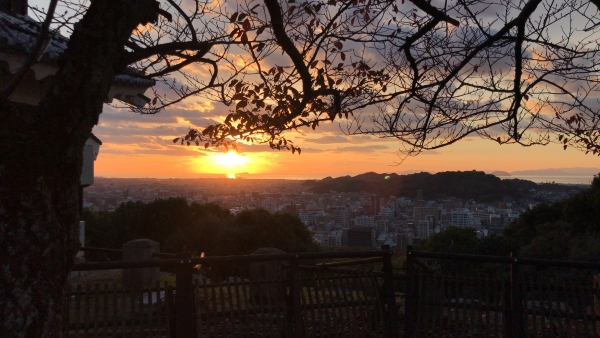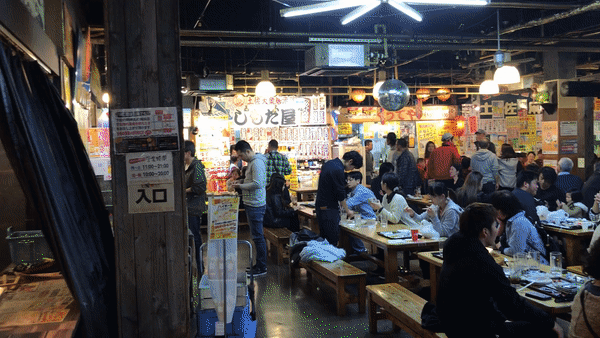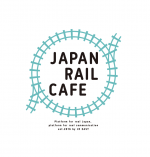Travel Communicator Stories: My Shikoku gems

To most travellers to Japan, Shikoku (四国) may be a region almost unheard of. In fact, my trip to Shikoku would not have happened if not for a friend who was working in Kochi at that point of time. My first thought was, “where is Shikoku exactly?”. And with a couple of weeks of research, I found that this untouched region may be exactly what city-dwellers need to escape from the urban jungles of Singapore. Shikoku is the smallest island among the five major islands, the others being Hokkaido, Honshu, Kyushu and Okinawa. And despite its strategic location near the center of Japan, it flies under the radar for most tourists, including myself. But after my visit in November 2018, I am convinced that this could possibly be the most underrated region of Japan.
Ritsurin Garden

(Video credit: Hosung Ryang)
Kagawa Prefecture (香川県 Kagawa-ken) was my first destination as it was the closest to Osaka, and also had a couple of great attractions that welcomed my first day in Shikoku. Takamatsu is the de facto capital of Kagawa Prefecture, and is a port town that also blends in a bit of suburban Tokyo vibes as well as providing a great escape to the mountains and nature near it. I dropped my luggage off in my hostel and made my way to the famous Ritsurin Garden (栗林公園 Ritsurinkoen). Built more than 400 years ago, Ritsurin Garden is visited by thousands for its grand garden that stretches across over 750,000m2, immediately transporting you back in time to the simpler days. Surrounded by countless trees, flora, and the mountains, I found myself getting lost in immersion. Within the garden, there are many museums depicting the history of Kagawa Prefecture, as well as highlighting some important cultural aspects of the region such as Sanuki Udon. There is even a tea house where you can take a break and enjoy a light meal accompanied by some fabulous tea.
|
Ritsurin Garden (栗林公園) |
Marugame-machi Shopping Street & Sanuki Udon

(Image credit: Hosung Ryang)
I headed to Marugame-machi Shopping Street (丸亀町商店街 Marugamemachi Shoutengai) to seek out some Sanuki Udon for dinner. It is in fact the longest shopping street in Japan and thus, restaurants and shops were abundant. I finally found a local udon shop that made its own noodles, Kawafuku (川福). I opted to sit at the counter and was in awe as my senses were attacked by the freshly made udon. Watching the owner make the udon from scratch as the scent of the light broth filled the shop was such a joy, and only built my anticipation for the first bite of Sanuki Udon. It was snappy yet had a great chew, and the broth was light yet perfectly hearty. It truly was a bite that made me understand why Kagawa is the undisputed king when it comes to udon.
|
Marugame-machi Shopping Street (丸亀町商店街) |
|
Kawafuku (川福) |
Katsuo no Tataki (Seared Skipjack Tuna)

(Image credit: Hosung Ryang)
This speciality restaurant called Kuroshio Ichibankan (黒潮一番館) was heavily recommended by my local friends, located near Tosa-Saga Station (土佐佐賀駅) in Kochi Prefecture (高知県 Kochi-ken). Kochi Prefecture is very famous for its Katsuo no Tataki (カツオのたたき seared bonito or skipjack tuna) and I was told by my local friends that they serve the best Katsuo no Tataki right here, as the owners catch the bonito fresh every morning. If you arrive early enough, you may even witness the grandpa owner bringing the freshly-caught bonito into the restaurant, and be granted access to the prep area to witness the searing process like I did. And with a small fee of ¥2,000, you may even partake in the searing process yourself. Order the recommended set menu, and be prepared to have the best fish you’ll ever taste in your life. With the smoky taste from the dry hay imparted onto the bonito, it had a perfect sear on the outside with just the right amount of rareness in the middle. Served with some salt, garlic and onions to taste, this will be one local delicacy you would not want to miss!
|
Kuroshio Ichibankan (黒潮一番館) |
Ashizuri Underwater Observatory

(Image credit: Hosung Ryang)
An hour’s drive south from Nakamura Station is an interesting place I read about, called the Ashizuri Underwater Observatory (足摺海底館 Ashizuri Kaiteikan). As the name suggests, it is an underwater observatory that was very Wes Anderson-esque. But how exactly does this underwater observatory work? I found out that it is a lighthouse-like structure built 7-meters deep into the ocean, and you get to see the fishes and the underwater ecosystem thriving in its true natural habitat, a reverse aquarium of sorts! A must-visit for fans of marine life and aquariums. As this place is out of the way, the only way to access it conveniently is via rent-a-car from Nakamura Station (中村駅).
|
Ashizuri Underwater Observatory (足摺海底館) |
Hirome Market

(Image credit: Hosung Ryang)
Hirome Market is a must-visit for those who love the Marche-style of dining and soaking in the atmosphere of a hustling, bustling dining hall. Located about a 15-minute walk away from Kochi Station (高知駅) right at the end of a local shopping street, this food hall-cum-market of sorts is both a local and tourist favourite. A gathering of a wide variety of both local and foreign cuisine, there’s something for everyone here, and it’s constantly crowded throughout the day. I visited at around 10am on a Friday, and it was already bustling with life! The locals here sure know how to enjoy their lives, and you’ll be quick to jump right in with the crowd. It was not uncommon to see vendors and locals going around, sharing a couple of Yuzu beers (yet another local speciality) and making new friends for the day, while local housewives bargained over freshly-caught fish.

10am and it was already packed! (Video credit: Hosung Ryang)

(Image credit: Hosung Ryang)
My friend and I grabbed a yuzu beer each, and scoured around for some grubs to munch on, including fan favourites like karaage (唐揚げ fried chicken), Katsuo no Tataki, some German sausages, and pan-fried gyoza. Soaking in the atmosphere and even cheering between our neighbouring tables and shopkeepers, I felt truly welcomed in Kochi Prefecture.
|
Hirome Market (ひろめ市場) |
Jakoten (Uwajima Speciality Fishcake)

(Image credit: Hosung Ryang)

(Image credit: Hosung Ryang)
I wanted to try out a speciality food from Ehime Prefecture (愛媛県 Ehime-ken), and came to know of this local delicacy called jakoten, a fish cake made with local hotarujako (蛍雑魚 glowbelly fish). Invented in Uwajima City due to its abundance of the hotarujako, it is now popularised all across Ehime Prefecture, and can be found in the airport and various tourist locations, such as Dogo Onsen. However, I managed to find a place that makes its jakoten fresh daily, at a shop called Shimahara Kamaboko. Located an hour’s drive south of Matsuyama City or a short 15-minute drive from Uwajima Station, the smell of freshly fried jakoten hits you the moment you pull into the carpark! From plain jakoten to jakokatsu (fried breaded jakoten), to those stuffed with squids or cheese, and even vacuum packed jakoten that makes the perfect gifts, your taste buds and tummy will sure be glad you dropped by here!
Shimahara Kamoboko (島原かもぼこ)
Address: 4668 Iwainomori, Uwajima, Ehime, 798-0078
Nearest station: Uwajima Station (宇和島駅)
Opening hours: 9am–6pm
Meal pricing: ¥150–¥5,000
Tel: +81-89-527-2345
Shikoku truly was an unexpected surprise for me, and has solidified its status as a top region in my books. I feel that there is so much yet to be explored, and I am definitely looking to return very soon. Recently, I have shared my experience in further detail at JAPAN RAIL CAFE’s “JR Stories: Shikoku” online event, including areas not in this article, so do check it out for an expanded sharing session from myself as well as my friends in the Japan Lovers’ Community!
Header image credit: Hosung Ryang

Writer's profile: Having travelled to 28 prefectures and counting, Hosung’s dream is to cover all prefectures during all seasons! A Travel Communicator at JAPAN RAIL CAFE for two years, he is more than happy to share his experiences and help make your next trip as memorable.





